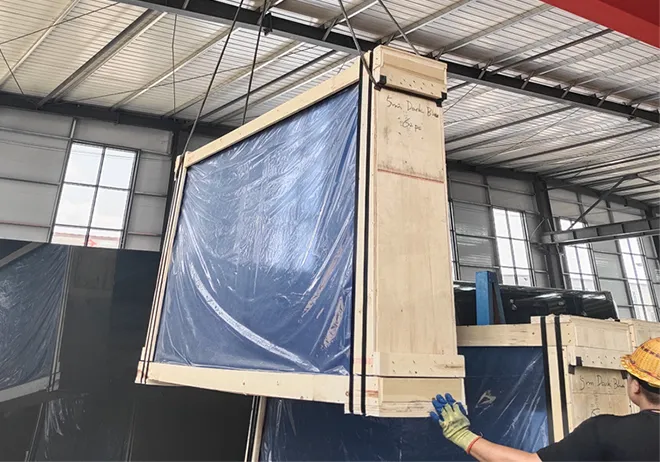Dec . 04, 2024 09:47 Back to list
laminated and tempered glass
Laminated and Tempered Glass The Intersection of Safety and Aesthetics
In today’s architectural and design landscape, glass has emerged as a pivotal material that fuses beauty with functionality. Among the various types of glass, laminated and tempered glass have gained significant attention due to their enhanced safety features, aesthetic appeal, and versatile applications. Understanding the characteristics and benefits of these two glass types can lead to informed decisions in both residential and commercial projects.
What is Laminated Glass?
Laminated glass consists of two or more layers of glass that are bonded together with an interlayer, typically made from polyvinyl butyral (PVB). This combination is then subjected to heat and pressure, creating a single pane that retains the clarity of glass while providing increased strength and durability. One of the standout features of laminated glass is its ability to hold together when shattered. Instead of breaking into sharp shards, the glass fragments remain adhered to the interlayer, reducing the risk of injury and enhancing safety.
In addition to safety, laminated glass offers acoustic insulation, making it a popular choice for urban environments where noise pollution can be a concern. The interlayer acts as a sound barrier, providing a quieter indoor atmosphere. Moreover, laminated glass can also enhance UV resistance, protecting interiors from harmful rays that can cause furniture and flooring to fade over time.
What is Tempered Glass?
Tempered glass, on the other hand, is produced through a process of extreme heating and rapid cooling. This toughening process increases the glass's strength, making it several times stronger than standard glass. When broken, tempered glass shatters into small, blunt pieces rather than jagged shards, which reduces the likelihood of serious injury. This characteristic makes it an ideal choice for various applications, including shower doors, glass doors, and facades in commercial buildings.
In addition to its strength, tempered glass is highly resistant to thermal stress. It can withstand sudden temperature changes, making it suitable for environments where temperature fluctuations are common. This property is particularly beneficial in kitchen applications and sunny areas that experience substantial heat.
laminated and tempered glass

Applications in Design and Architecture
Both laminated and tempered glass serve crucial functions in modern architecture and design. Laminated glass is often used in skylights, glass railings, and storefronts, where safety and aesthetics are paramount. Its ability to provide security while allowing natural light to permeate spaces makes it a favorite among architects.
Tempered glass, meanwhile, is frequently employed in applications requiring enhanced safety and thermal resistance. Its usage includes windows in high-rise buildings, glass walls, and enclosures in commercial spaces. The strength of tempered glass ensures compliance with building codes, facilitating its widespread acceptance in construction.
Sustainability and Innovation
In today’s world, sustainability is a growing concern, and both laminated and tempered glass can meet eco-friendly standards. These glass types can be recycled, reducing waste and providing a sustainable solution for modern projects. Moreover, advancements in technology continue to enhance the production processes of laminated and tempered glass, allowing for greater energy efficiency, which is increasingly crucial in the context of green building certifications.
Conclusion
In summary, laminated and tempered glass represent a synergy of safety, beauty, and functionality that is indispensable in contemporary design and architecture. Their unique properties not only ensure the safety and well-being of occupants but also contribute to the aesthetic appeal of various structures. As technology evolves and the demand for sustainable building practices grows, the role of laminated and tempered glass is poised to expand, making these materials essential elements in the architecture of the future.
-
Safety and Style with Premium Laminated Glass Solutions
NewsJun.24,2025
-
Reinvents Security with Premium Wired Glass
NewsJun.24,2025
-
Premium Float Glass Line for Modern Architecture
NewsJun.24,2025
-
Low Emissivity Glass for Energy-Efficient Architecture
NewsJun.24,2025
-
High-Performance Insulated Glass Solutions for Modern Architecture
NewsJun.24,2025
-
Elevates Interior Style with Premium Silver Mirror
NewsJun.24,2025
Related PRODUCTS














